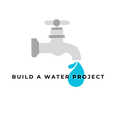Water Conservation in Desert Regions
- Asiya Siddiqui
- Jan 27
- 2 min read
By: Jonas Wahlstedt
March 10, 2024
Water scarcity is a global issue, however, notoriously arid regions must utilize innovative
techniques and practices to ensure that water is used as efficiently as possible. In
recent years water saving methods have been introduced and improved upon, allowing
agriculture and life to exist in areas where it would have previously been unthinkable.

Camels drinking water in the desert.
Water Harvesting
Water harvesting involves farmers collecting rainwater or runoff for further
agricultural use, essentially a form of water recycling. While this method is only possible
in areas that receive rainfall, it allows agricultural families and companies to store
water during rainy periods to use when a dry spell occurs. The popularity of this technique can be attributed to its simplicity, efficiency, and low cost.
Another innovative water conservation technique is the use of soil moisture sensors. Sensors are placed into the soil, allowing the technology to measure moisture levels in
the ground across a wide area. These sensors provide farmers and companies with valuable information, ensuring that crops receive adequate water and reducing waste by stopping water flow when an ideal moisture level is obtained. As the technology associated with sensors continues to improve, these sensors will likely become even more efficient and useful, allowing for more extra savings.
Desalination
Desalination is used in arid regions that lack sources of freshwater and are located
near or on the coast. Access to the ocean is crucial for desalination plants, as the process requires saltwater, which is then converted into freshwater. Historically, this technique has been too expensive for most nations struggling with fresh water, which is why it was more popular in wealthy regions such as the Gulf of the Middle East. However, technological advancements are enabling this process to become more affordable and accessible, allowing poorer nations to utilize this invention.
There are currently around 16,000 water desalination plants in an estimated 177 countries. The desalination technique can be used anywhere with access to the ocean, meaning this technology may be the most effective in addressing the long-term water crisis.
Water scarcity currently affects hundreds of millions of people and threatens to harm many more. A silver lining is technological advancements that efficiently use water and decrease overall waste. Drip irrigation, water harvesting techniques, and desalination plants will make the water crisis more manageable in the future.
Support our cause!
References: Biovision, (2020). Available at:
ing-Technics-Poster.pdf.
Chibani, (2023). The Costs and Benefits of Water Desalination in the Gulf.
Arab Center Washington DC. Available at:
on-in-the-gulf/.
Dove & Bowie, (2023). How Desalination Works. HowStuffWorks. Available
salination.htm.
Hossain et al., (2024). Precision agriculture practices for smart irrigation.
Available at:
Quevenco, (2015). Bountiful crop with every drop: using drip irrigation to
increase yields and conserve water. Available at:
6-1/56105912425.pdf
Staff, H. (2021). Drip Irrigation: Israel’s Ingenious Invention. Hasbara
Fellowships. Available at:
University of Florida, (2008). Soil Moisture Sensors. Available at:
UN Environment Program, (2021). Five things to know about desalination.
Available at:
nation
.png)



Comments